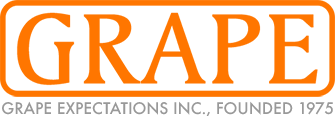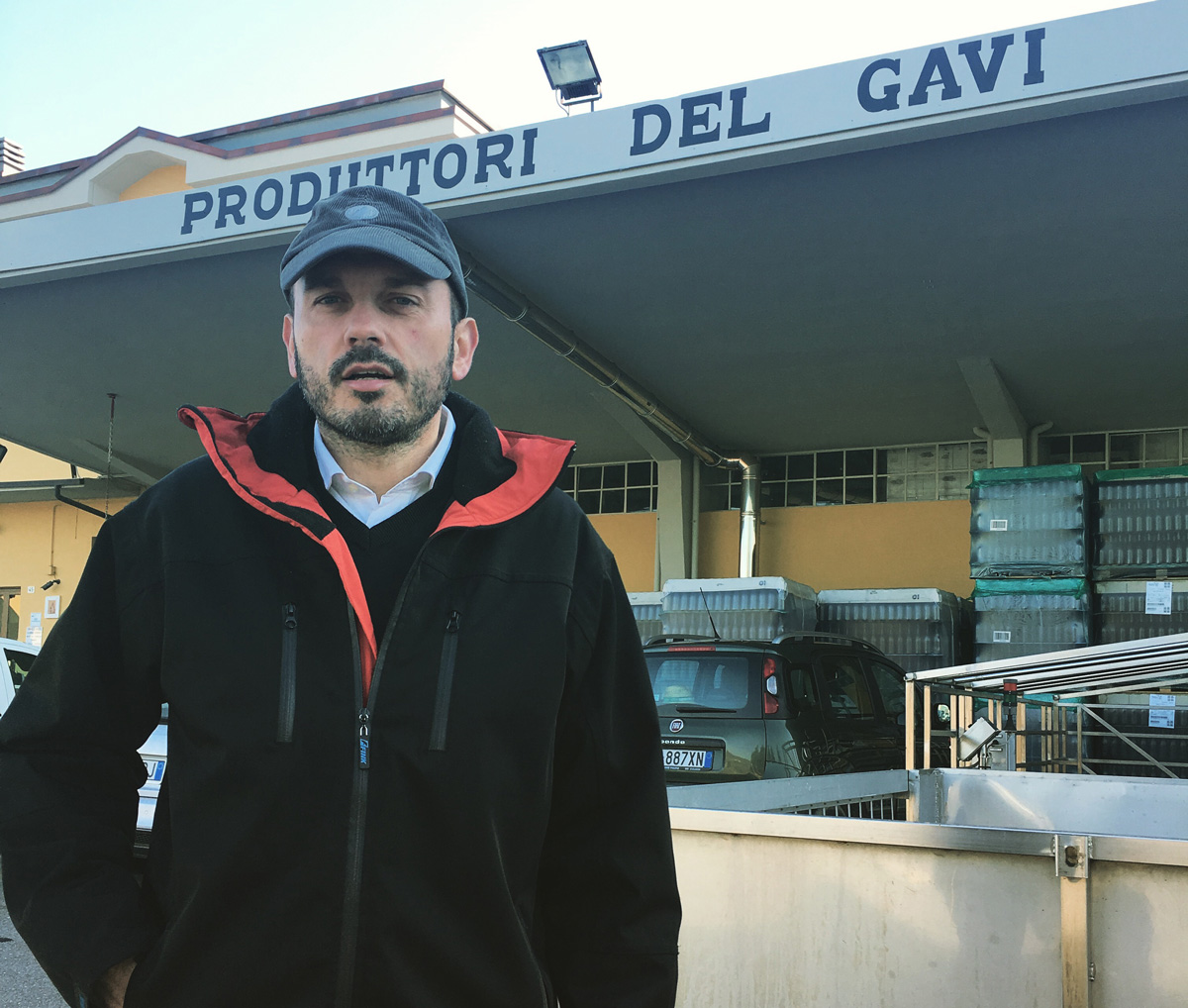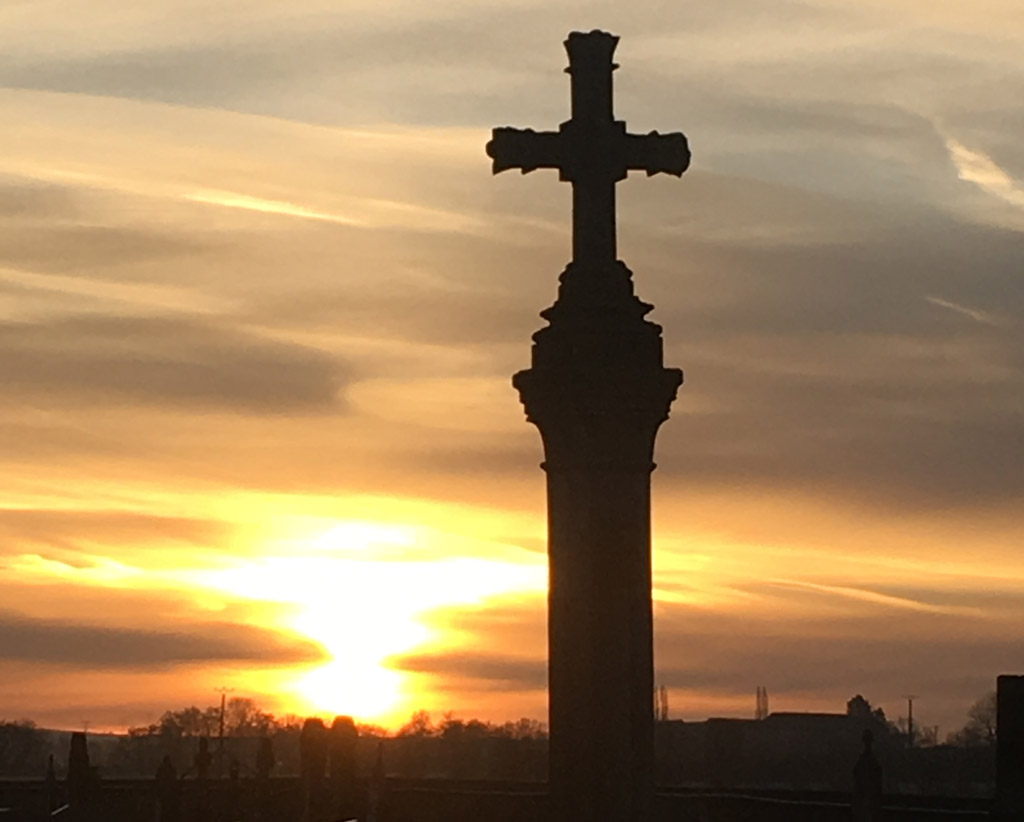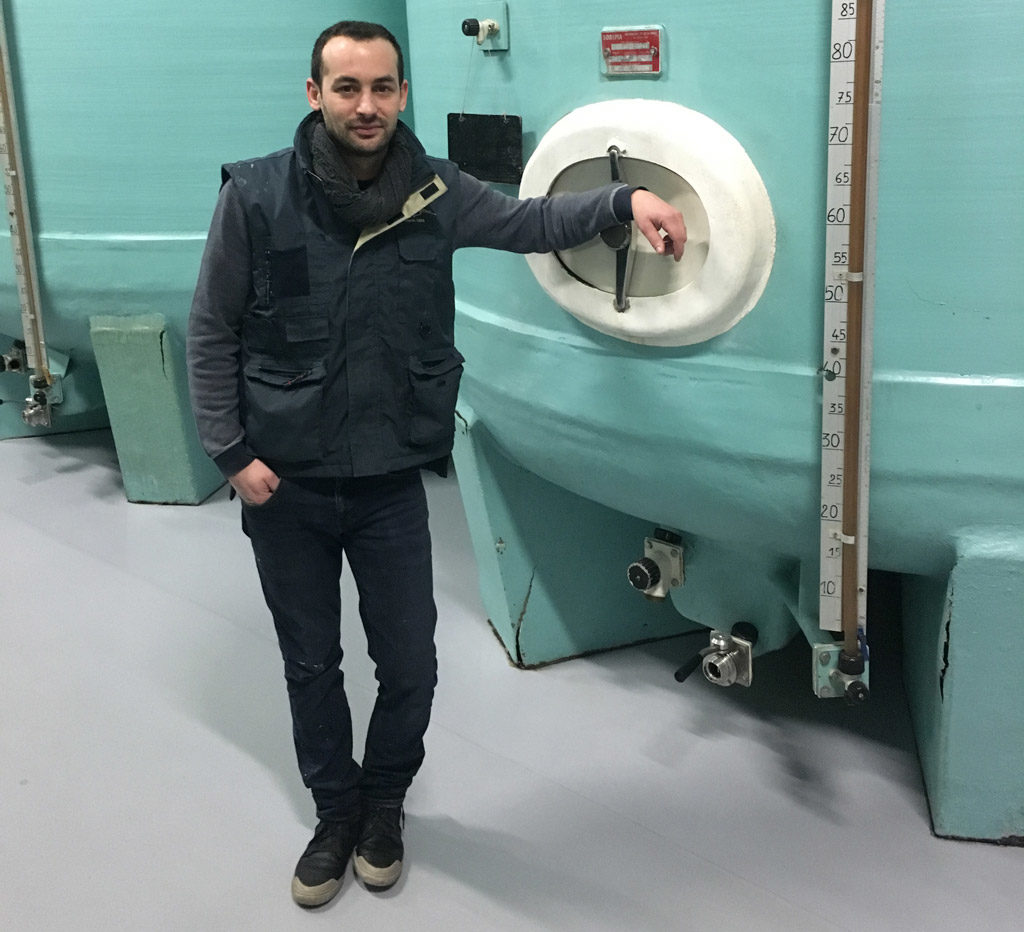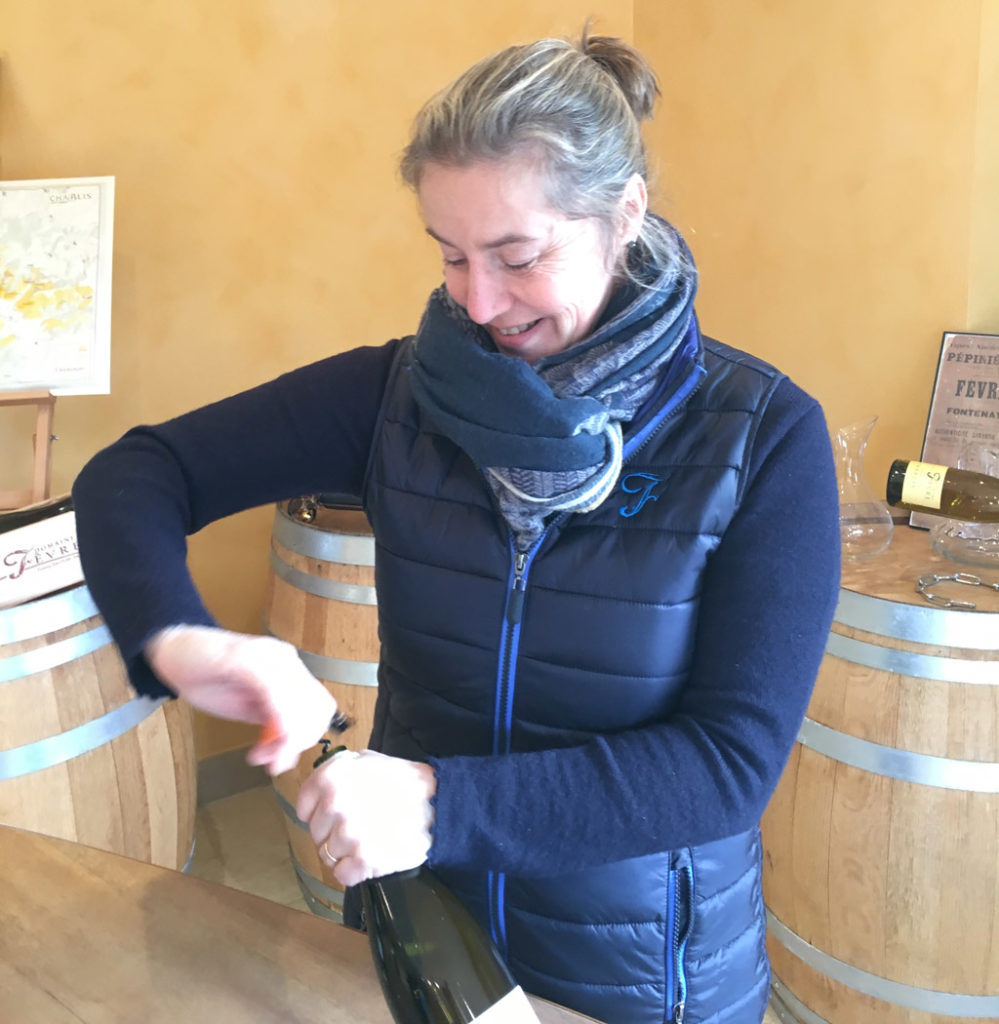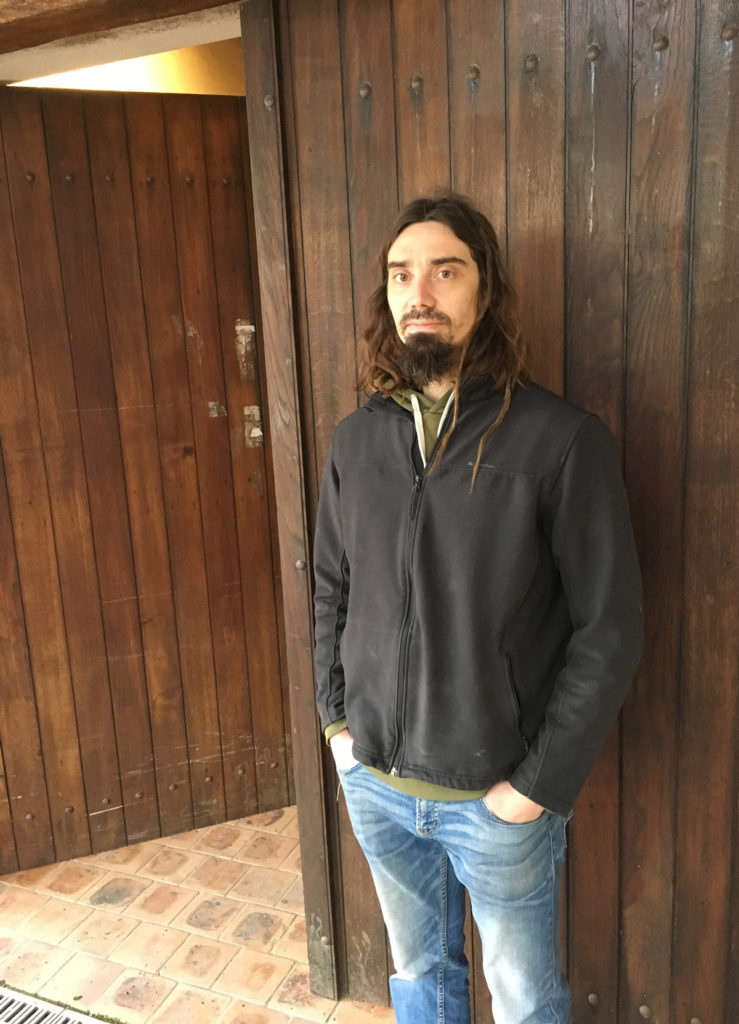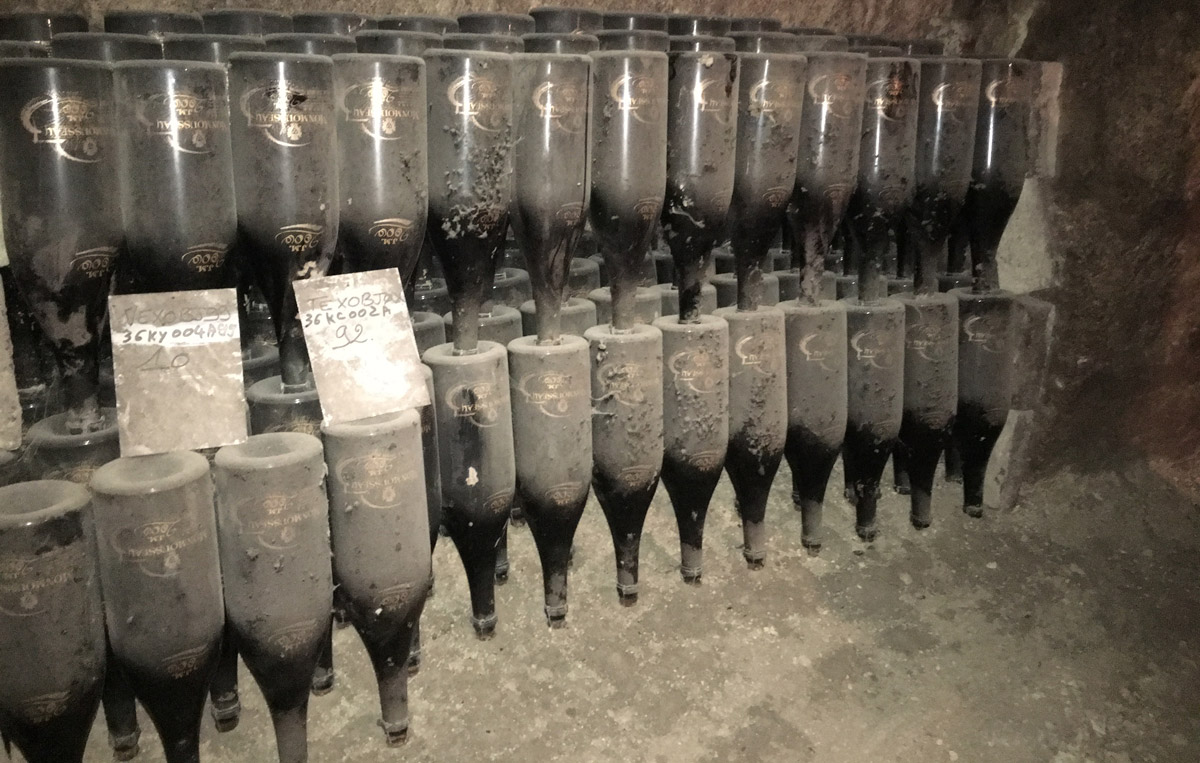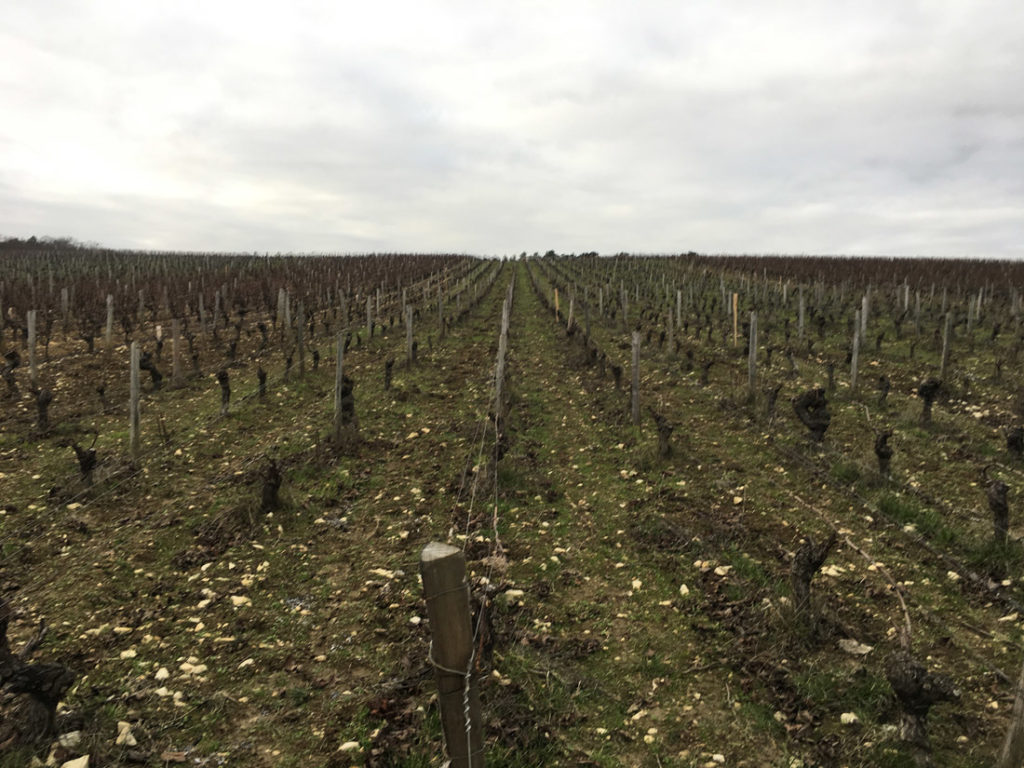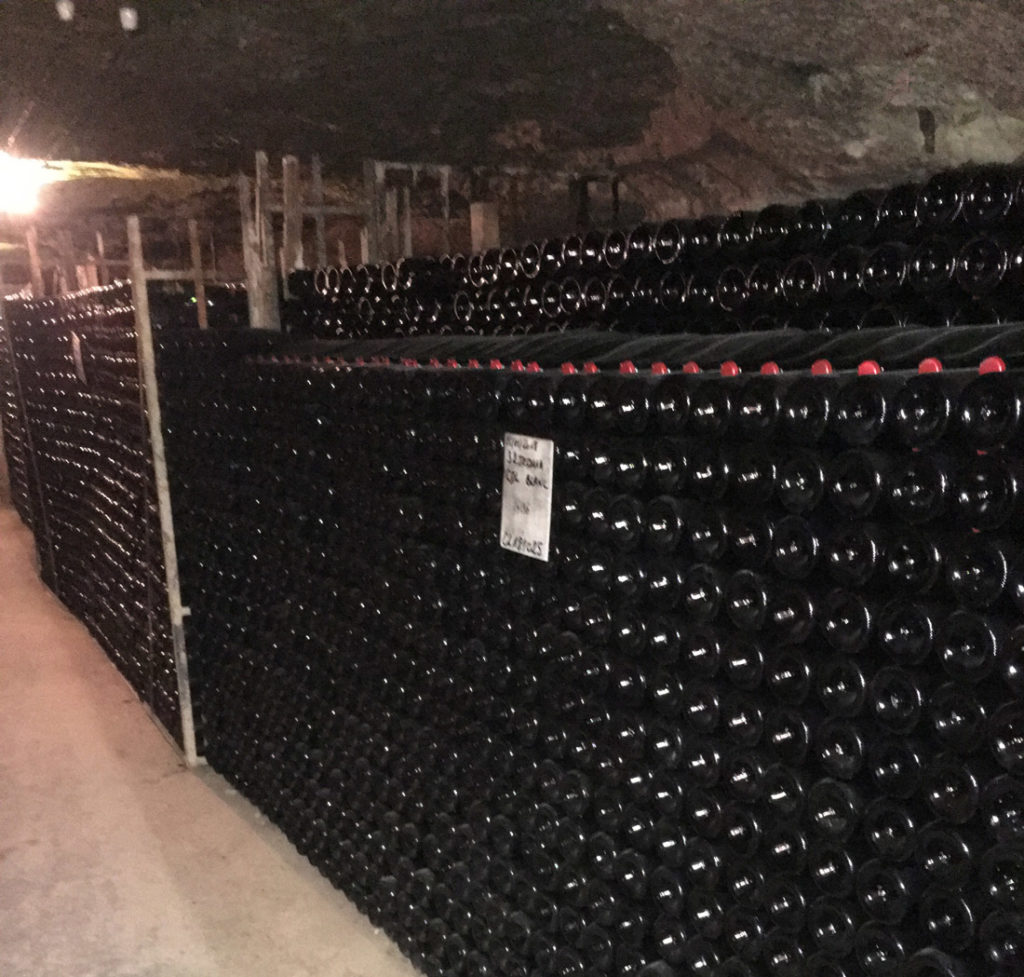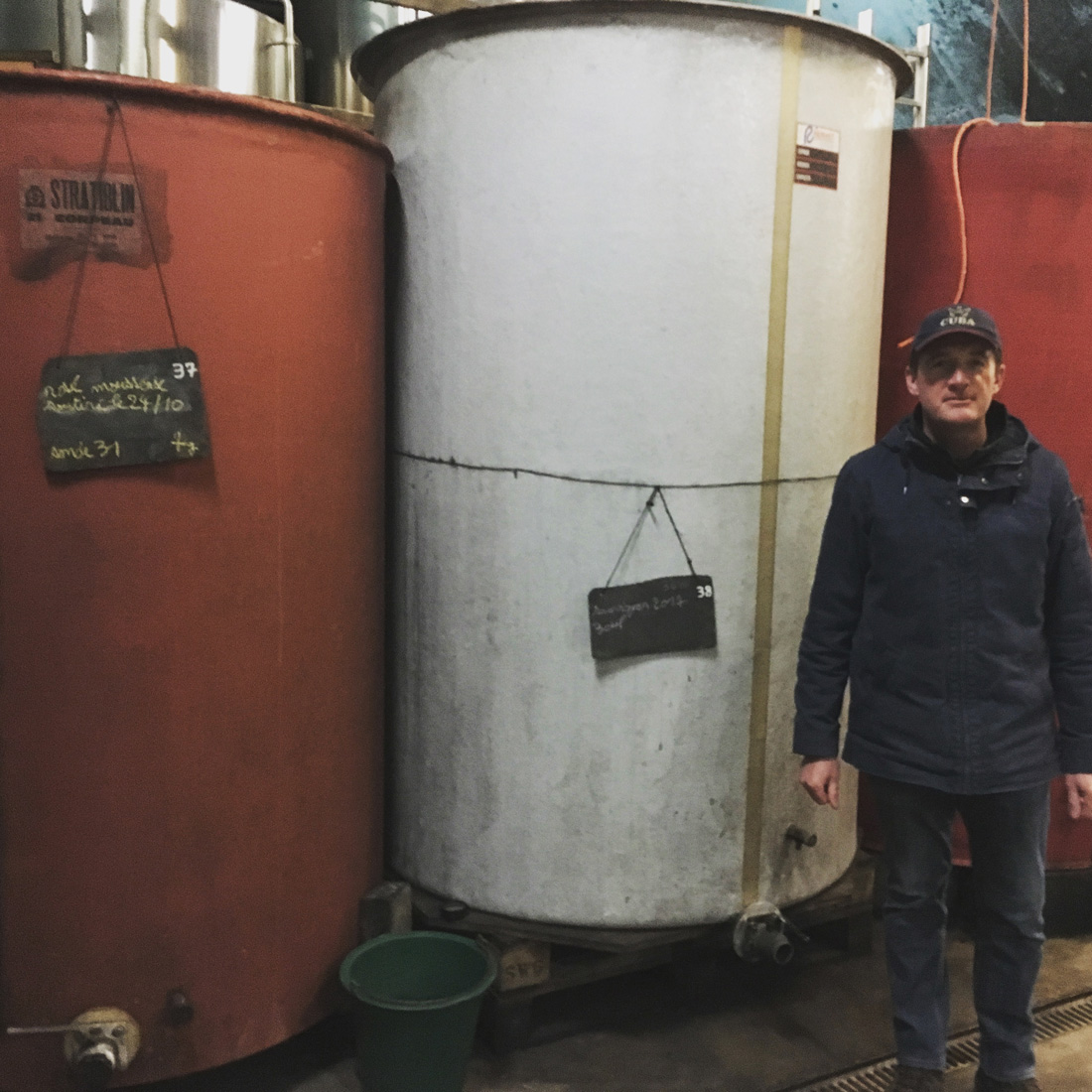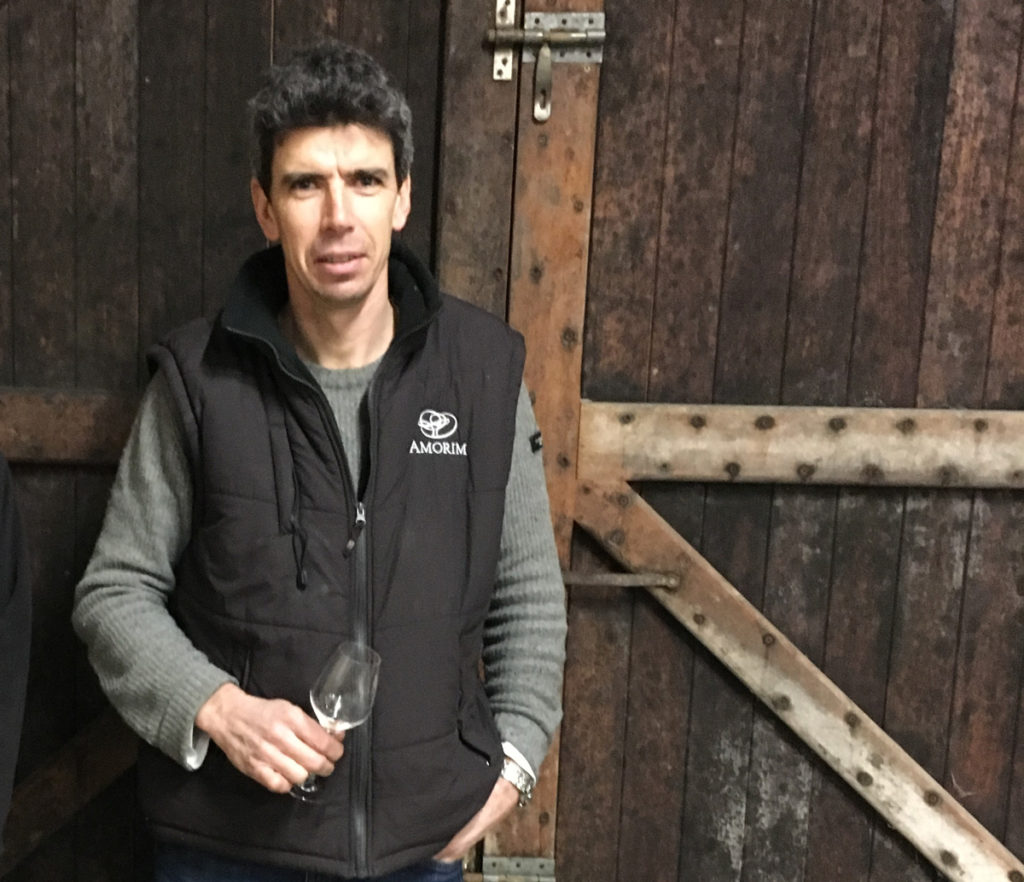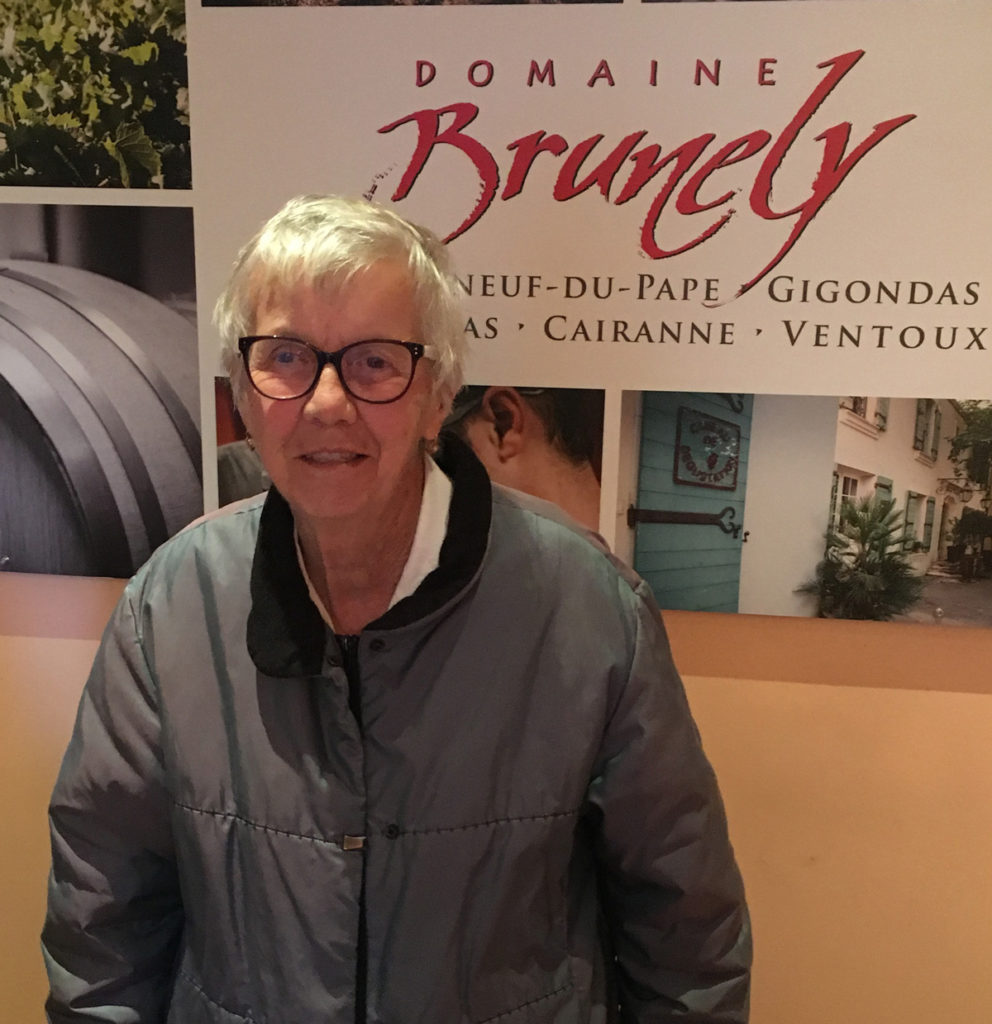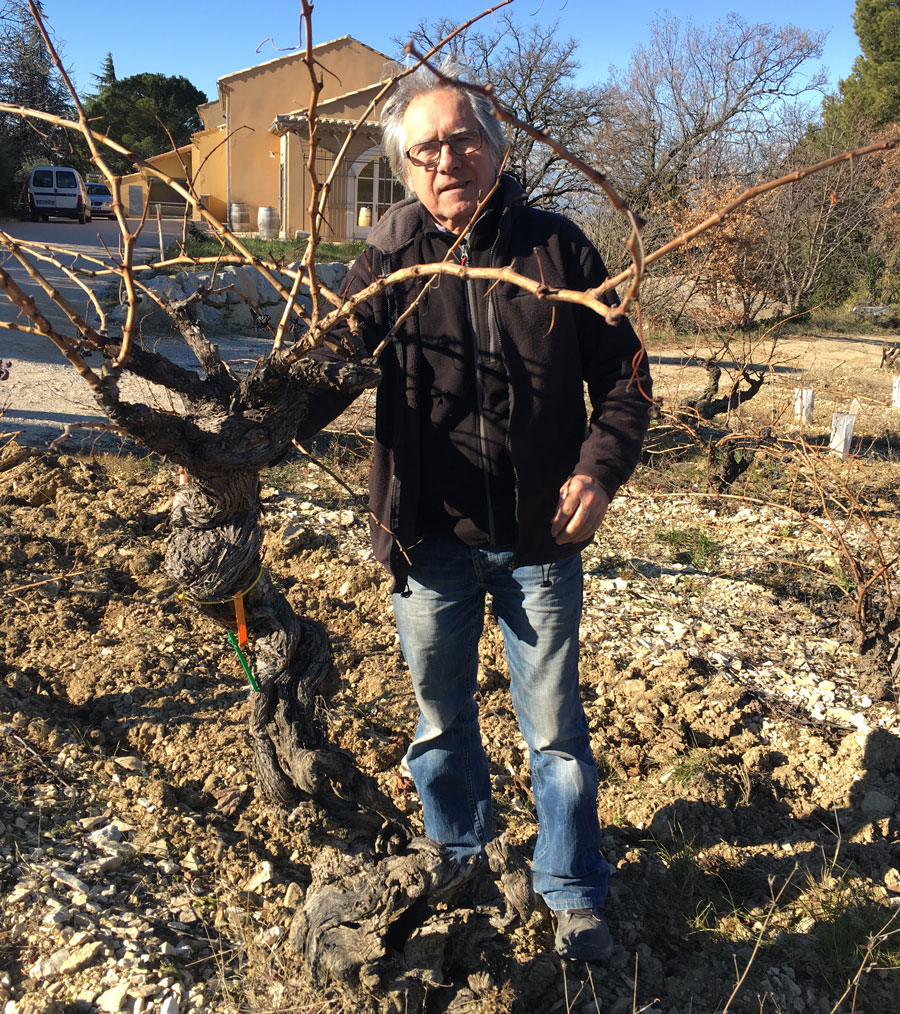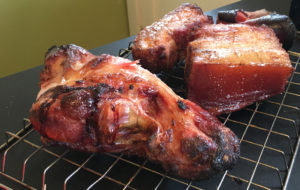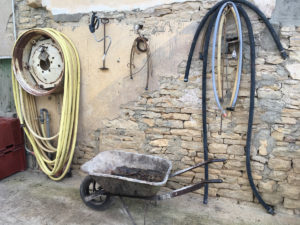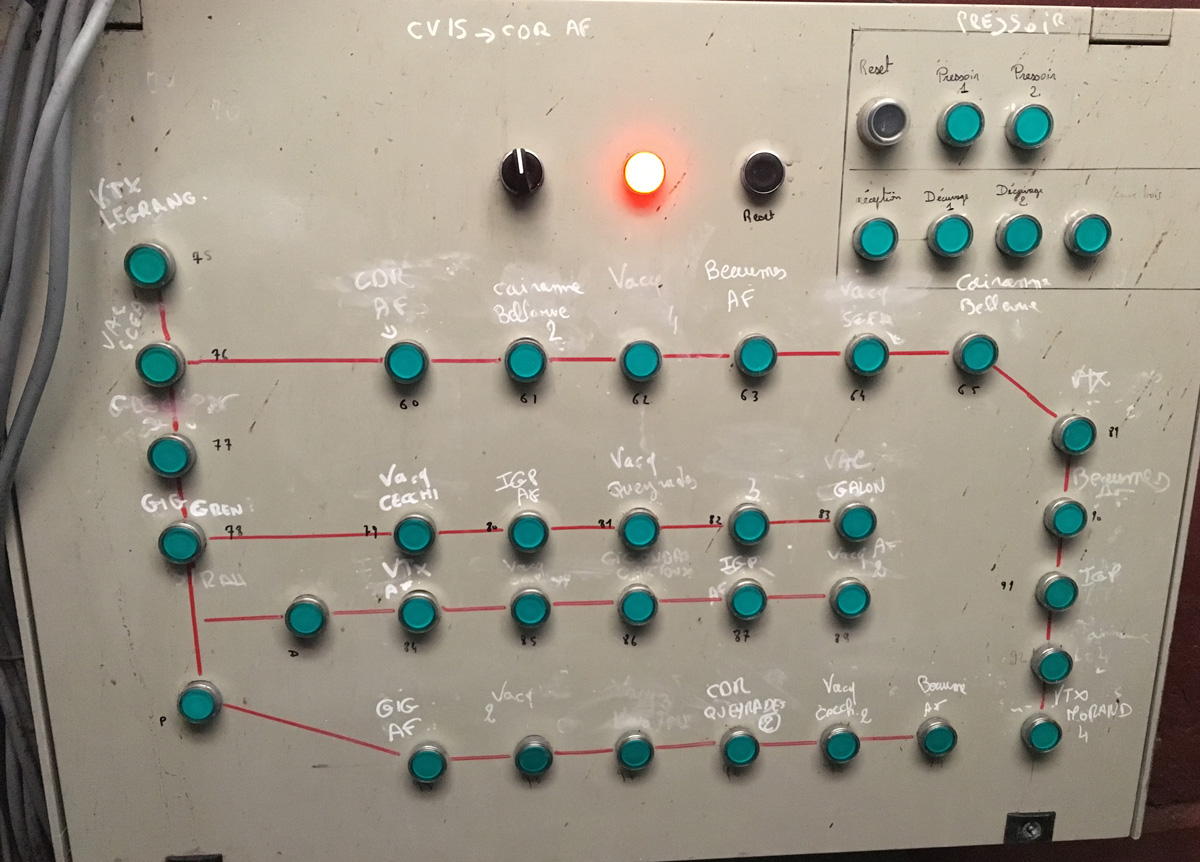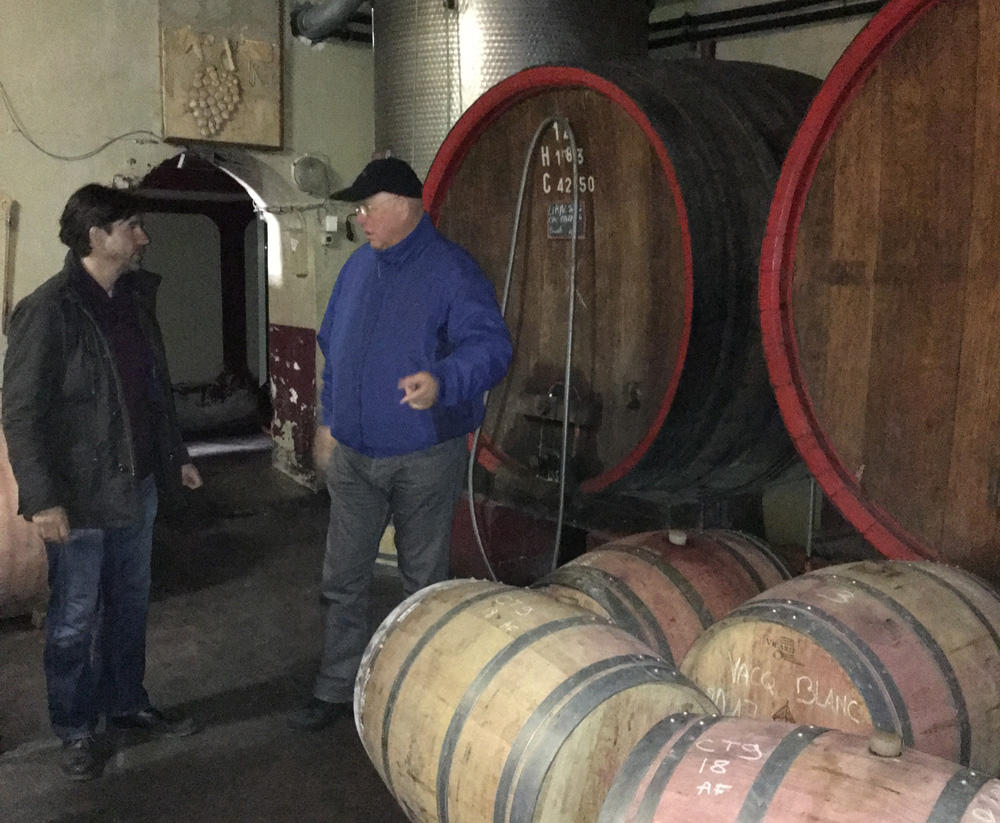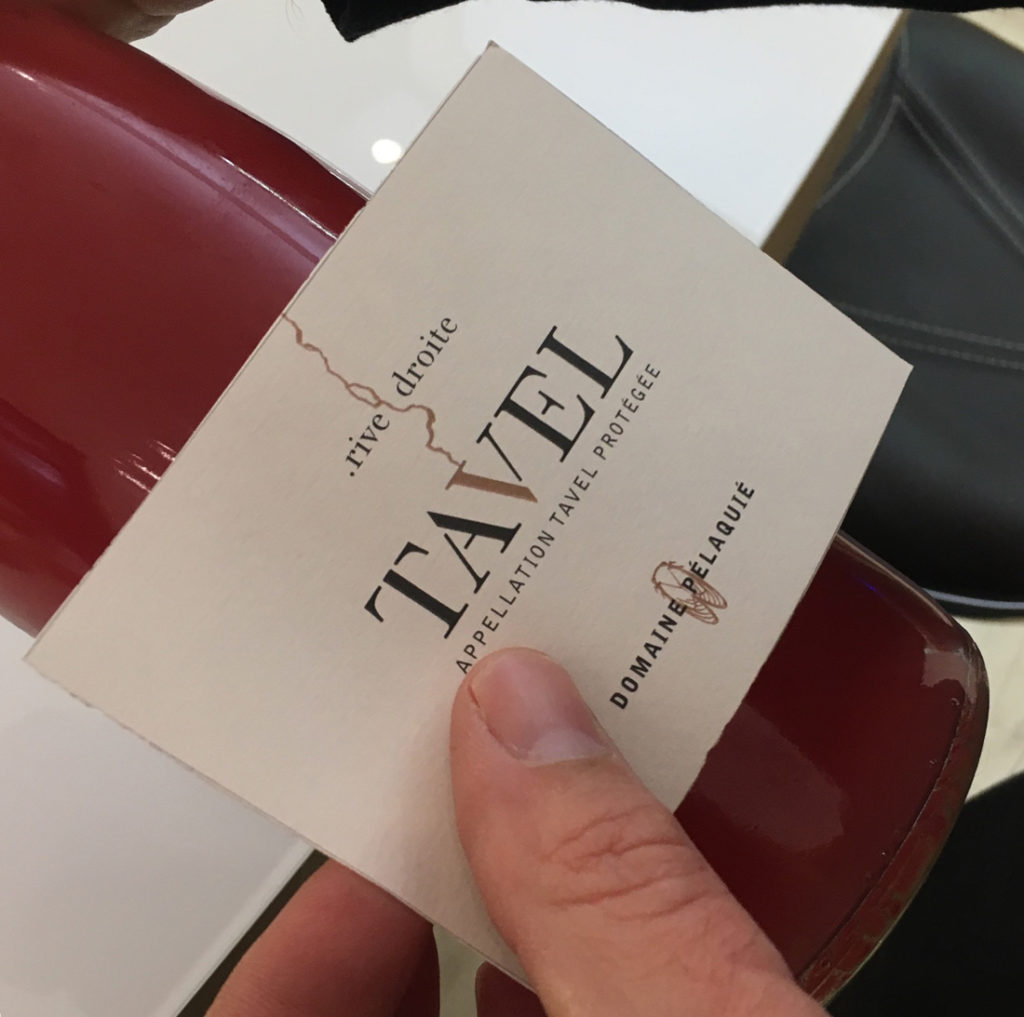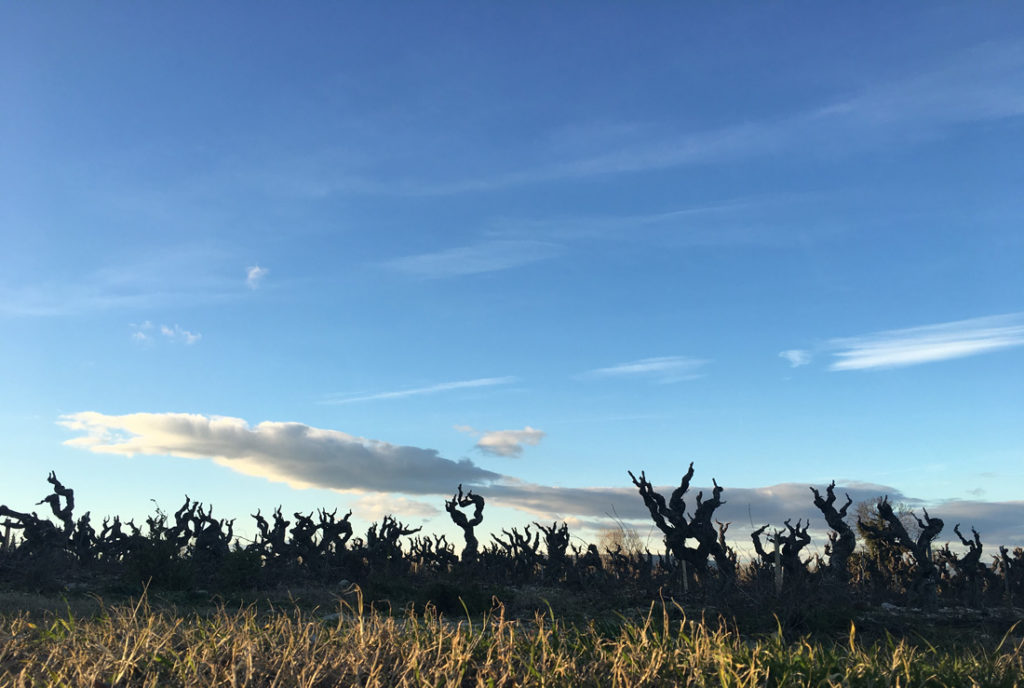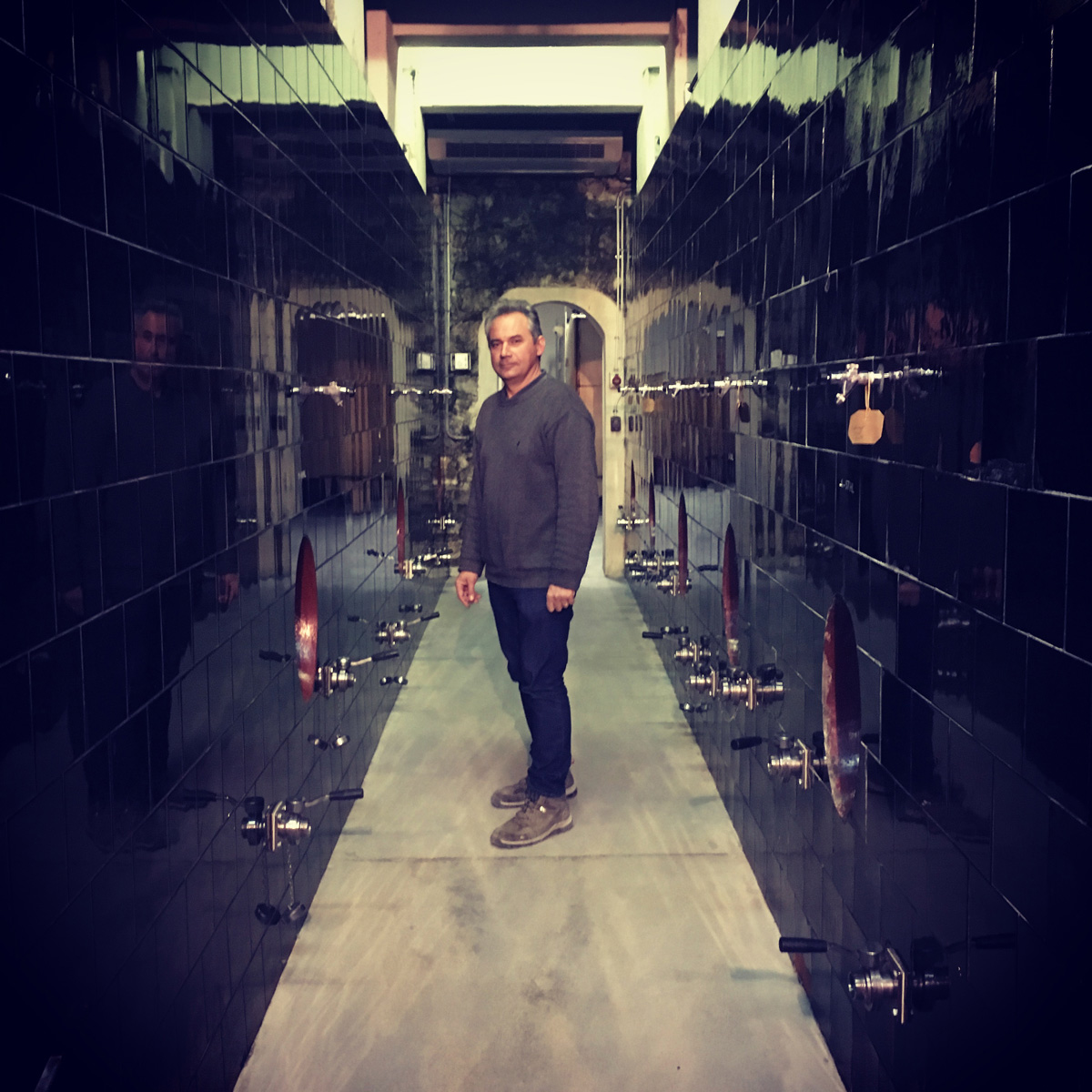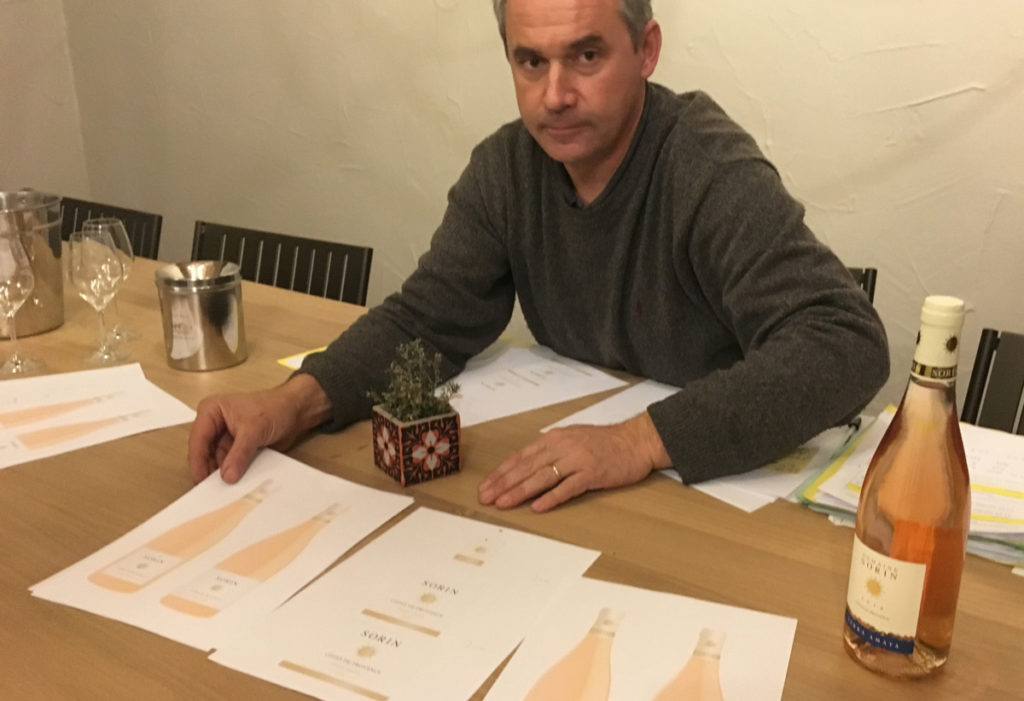Angelo Simonetti caught up with the inimitable Derek Mossman and Pilar Miranda of Garage Wine Co. while in Chile several weeks ago. They spent some time in the kitchen and went through current and upcoming releases including Garage’s yet to be seen 2018 Old Vine Pale. For those of you not familiar with Garage Wine Co., they’re at the forefront of Chile’s exciting and growing movement of independent vintners. To listen, here are the episode links on Apple Podcasts/iTunes and Spotify. You can also listen right here on the page:
The full transcript can be found below:
[John Griffin’s opening comments] Grape’s man in Portland, Angelo Simonetti, was heading out to Pichelemu to catch a little surf when he got the call. Derek and Pilar had just returned to their apartment in Santiago and said come on over and let’s try some wines. So he did. We join their conversation just as they’re opening a bottle of their increasingly popular Pais. Here we go.
DEREK: This is what I had on hand, a half bottle. To me the 18 is interesting. It’s a little brighter.
PILAR: Yes, less herbaceous than this one (referring to a bottle of they have open as well, I think it’s a 16).
ANGELO: Okay. So if you have a full description on this, what do you think.
PILAR: For the Pais?
ANGELO: For the Pais.
PILAR: I think it’s still, it’s uhh, representative of the variety. We see that the wine notes like the herbal things, the smells, the aromas that you can feel, it still have a very nice body. I think at two years old the wines are still very well stand up.
ANGELO: Still holding.
PILAR: Yeah, it’s holding very well. The tannins are impressive but it still has a smooth but you can feel them. It’s a light red. I mean it’s not cab. But it’s kind of, kind of serious Pais. A lot of people start to make Pais with carbonic maceration, being very fruity, very strawberry, cotton of candy aromas. I don’t like that style. I think it goes well with other dishes (?). It’s not, uhh, to show the variety in the end if you make carbonic maceration like you can use any variety, going to smell the same.
DEREK: There’s a lot of Pipeño being sold in the US now, which to me is a different animal. A different thing. But I’m still pleasantly surprised how much Pais sells in the US. People just love the story and it’s just a lighter wine. It’s like buying Beaujolais or something.
ANGELO: I can tell you it’s more than a Beaujolais. The quality would you get in the nose and the mouth… it’s not simple and one dimensional.
PILAR: Yeah, but that’s what I was trying to explain with “a serious wine”. Like I mean the Pais it’s not just a simple, light wine. I think it has a structure, it has the tannins, a little complexity; it’s not just a simple wine.
DEREK: The 16…
PILAR: The 16 you can drink it easily,
ANGELO: But it’s still have something, not just goes and pass.
DEREK: The 15 is still drinking well.
ANGELO: This is 16.
PILAR: Yes it’s sixteen, but 17 is sold.
ANGELO: And holding that much?
DEREK: The 15 holds. But I’m not sure how much longer.
ANGELO: But you’re talking about Pais 2016, you’re talking about two years old Pais.
PILAR: Yeah, and you have a year and half to sell the wine, so it’s been a decent time to sell the wine and for this variety.
DEREK: The um, what we do with things with labels, these two wines we consider one winter wine. So when we began this project, when we were discovering where the old gentleman with their horses and plows had Cariñena. Normally when you did your roadside tastings, you tasted with them they’d have one foudre and they’d want a “luca extra” (1000 pesos) if you want to take a liter away, you’d have to take your own package, they didn’t actually have it bottled, and what their explanation was that that wine had a second winter and that justified the extra thousand pesos. And that specially related to the second winter and in the end what we found is generally in the Cariñenas, the malolactic doesn’t finish before wintertime, so goes through its first winter without malo. It does it in the springtime and it really isn’t wine and unless you give it another winter of storage, it’s too racy. It’s too, it has too much acid.
It seems that just that doesn’t come into its own. It takes longer to get over the hump. So what we did after working this concept of two winter wines for many years, we decided that, “you know what, we need, the farmers need to sell their Pais, not just their Cariñena, at a decent price. We need to make some things a little more approachable because it’s a cash flow thing. We want to sell some wines before two and a half years.” And in the end we began, the first one we made, was an old vine pale which is in Cariñena from a section of a farm that is, doesn’t matter what you do it has a higher, a higher yield and the old man won’t change, so let’s make a different wine, because we’ll want the good stuff of his down the road. So let’s do that one now. A one-winter wine.
And you know in the beginning I thought was kind of, I suppose I was looking for something original to present, probably in Inglaterra, with the , in England, with the Bibendum people. There were just so many people in a room, presenting 12 months in new oak, and this and that and it was so clichéd and hackneyed all the phrases they used that I really loved standing there and saying how many months in a barrel was like one winter or two winters and they’d be like “what’s that?” and you’d have to explain it but then you had them in your hand because now then they’d heard enough of the story the old man and the plows that they wanted to hear the other bit. What was the other bits? Oh, people would say “How old’s the vineyard?” Well, they don’t really know. But they say that when they were young, the vineyard was old. It looked just like it did now and they’re now old, so it must be very old now. And they just kind of smile at you and realize.
Ah, and then there were the percentages. They’d say “and what percentage of Mataró is in this?” I’d say I don’t know. It was 17 barrels of Carignan and one of Matarór. Have you got a phone there, you could probably calculate that if you wanted to. But to me we think in barrels and by the time the staff (not sure here) had a quick visit of the walk around tasting. They were into it. You were the only one they remembered from their loop, little walk around in the New World this afternoon. I thought it was absolutely brilliant. So we stuck with it.
So in the past, some people kind of complained that it was too it was too difficult to learn the system of the lots and it was too complicated, there were too many wines. And it was like dude, I won’t dive into your business and tell you how to sell your wines if you don’t tell me how to make mine, sort of thing.
So what we have done lately though is made sure that the online is everything. So if you go in here you see the parcels, we call them, all of these that we’re about to taste.
So this is 73. So if I go to seventy three here (Derek is referring to their website), we have 17 with 73 16 was 63. I don’t know why 53 and 43 are here but you normally look back in the past further than that.
So all of these, each lot, if it’s any kind of a franc it always ends in a two. There’s a system to it. Those numbers just kind of came out and we just stuck with them. So they weren’t logically organized. This was the seventy third one in gotten since 2000 and 3.
ANGELO: OK.
DEREK: So a lot is a lot. A lot is a real lot. We’ve actually got some work to do for the new single-vineyard series.
But all of these are here now and there’s an explanation of the parcels and everything is here so if you wanted to find the, what we were just laughing about the acidity of the sugar of 73, in theory the residual sugar is one point seven. In theory all of these things are here.
ANGELO: Alcohol 12.6. The pH three point zero five.
DEREK: That’s a low pH for this wine but most of the pHs are still pretty low. Most are unresolved sugars (I think that’s what he said) aren’t really a factor for us. That would be more or less average alcohol, this is kind of low at 12.5 A lot of these wines are 13.5. The idea is it doesn’t hit 14.
You get that with the cabernets because that’s what the vineyards are used to doing. It will take time to bring it down a little bit if we wanted to, but all of these are here and there’s a root to all of the others (again referring to their website).
[Now they are tasting Old Vine Pale light red]
ANGELO: Pilar how you describe this?
PILAR: Ah this is very fresh. Absolutely. What we call, again, like a red. A chilled red. I mean absolutely.
ANGELO: Can I sell this in the summer as a chill it up, patio wine?
PILAR: Absolutely. It’s been very successful.
ANGELO: I like this way. I like the temperature it is.
PILAR: Yeah. It must be cold like a white.
ANGELO: That’s what I’m saying. I like the way it is right now, but if it could chill out a little bit over there and serve it a party with my friends with a nice salmon.
PILAR: Yeah, it’s very successful in UK. It goes really well with Thai food.
ANGELO: Because there’s no sugar here.
PILAR: Yeah. Maybe when many people start with the wines they say I don’t like the rosé. I say no, taste it. It’s not sweet.
ANGELO: Yeah. There’s no sugar at all.
PILAR: So that’s the idea. It’s a dry wine with a great acidity. So for, you serve cold or for summer salads. Seafood.
ANGELO: Yeah. This is the, this is the salmon wine. In the Northwest we serve a lot of salmon at parties.
DEREK: For me this is not a rosé. That’s why we call it old vine pale. Because if it were in a black glass… It has tannins. It has…
ANGELO: It does. The acidity is balanced. There’s the tannins over there.
PILAR: Yes.
ANGELO: It’s very light and refreshing.
PILAR: We keep it in barrels for six months.
ANGELO: Six months in a barrel.
PILAR: Hoping it would round it out.
ANGELO: Yeah, round it up in your mouth. Okay.
This is a patio wine, for you know, well let’s put it in Celsius, when it’s 30 degrees outside. You don’t want to have nothing to do in the afternoon.
PILAR: Like today.
ANGELO: Exactly. You want to just sit down over there. You can drink this. I can drink two bottles of this. It’s fine.
DEREK: What we found is no one wants a patio wine that comes out in summer. This comes out October, normally.
ANGELO: Okay.
DEREK: But the idea is a to…
PILAR: By December it’s already in.
ANGELO: Like spring time.
DEREK: But it’s not doesn’t come out amongst the sales (could he be referring to holiday sales?).
This is something we’d like to start moving more in the US.
ANGELO: I think so too. I actually, this one of my recommendation right now cause my summer’s coming.
PILAR: Yes.
ANGELO: And this, and this is, ya know, Is the cherry on the top the cake.
DEREK: Yeah I think it’s really fun. Customers who have it do really well with it. What restaurants say they put this on the vino Matic machine, or whatever, on the thing. And they say you put that there and the people look at the different bottle and they right that, what they say to me traveling is that we’ve never had a wine that gives you the eats like that wine. And then they smile and say I am a restaurant, I sell food first so that’s a good thing.
ANGELO: Yeah. This is by the glass.
DEREK: And then what they say is that once they’ve had that by the glass people say, “What else do you have by these people?” you mean. And then you sell a bottle of whatever else.
ANGELO: So just two problems for us. I cannot sell rosé in this bottle. A light red I can sell in the green bottle. If they go over then say it’s like red. You don’t call rosé we call light red.
PILAR: Actually the label doesn’t say rosé, it says old vine pale.
ANGELO: That’s awesome. [Multiple “That’s Awesome, fading out]
JG Commentary
That’s right Angelo. That does sound awesome for the summer. A light red made from Carignan. Sign me up. Anyway, there you learned a little bit about Pais and how it came about and now the conversation continues with a discussion and a little slurping of some of the outstanding single-vineyard bottlings that garage produces. Take it away.
DEREK: So the first one is Truquilemu. Well up on the Cordillera de la Costa. Granitic soils This is a little further down in the Sauzal, but it’s similar in soil and this one we’ll talk about afterwards because it’s further inland in kind of an odd way.
This is pure, almost pure Cariñena with a single barrel of Monatrell, Mataró. This one has almost as much Garnacha as it does Cariñena with a little bit of Mataró again. And this is pure Garnacha.
These are projects that the old, generally the old men had, the old Cariñena, and we decided for putting more Cariñena in and then we put the Garnacha and the Monastrell to make like a field blend out of Don Nivaldo and Señor Orteriez’ (sp) farm. And out of that there are 2,500 bottles. 2,800 hundred bottles every year, something like that, no more. Of this one there is no more than 7000, depending on the year. And this is thirty five hundred…
PILAR: 3000 maximum.
DEREK: … something like that.
So the idea is that these are all different, but they’re kind of variations on a theme. I really liked what guy that writes for wine-searcher said…I really thought was interesting that someone wrote there. Well they did a mixed case from Chile. What you have to drink. And they go through the various wines, the famous, like the Montes Folly and bah, bah, bah, and he gets to us he say I’m not really going to chose one of these, any one from these guys will do. They’re all, how do you say, variations on a theme. They’re all wonderful and you just you just run through them and try them all, but I’m not going to choose one above the others. I thought that was kind of fun.
[The sounds of wine being poured and Angelo tasting]
ANGELO: The grip on this one is bigger than that one.
PILAR: Yeah.
ANGELO: Wow.
Sowsow? Sauzal?
PILAR: Sauzal. A very small town.
DEREK: The herbs are different.
ANGELO: Yeah. You. I get a little oregano and spicy…
DEREK: That’s really nice.
PILAR: It shows very well today.
DEREK: 45 was really, was hard, it was bit lighter…
ANGELO: Wow.
DEREK: … while 65 are in the stride.
in this dry. What can we say about these? These are all pretty, um.
PILAR: I would like to say that if you taste the wines they are different. I mean they show the place where they come from. But you see a connection between the wines between the varieties that it has tannins, really ripe tannins. The have a grip, very balanced acidity.
ANGELO: You can say, okay, this is a lot of acidity, but these two here with the very nice grip.
PILAR: Yes. I think the Garnacha does.
ANGELO: Yeah. And then just give, you see the, the impact of the wine.
PILAR: Yeah. You need a dish of beef or something to eat with this wine.
ANGELO: You know I, I, I like big wines in a reserve way, ya know. Initially, initially it’s just the…. because the complexity of this wine here and it’s still go round my mouth and just …(smack, smack, smack). I think sometimes the foods help but sometimes the food you need, just not too little time to understand better the wine. The wine is still talking to you before you have the next bite of the steak.
PILAR: I like because you feel the dryness, but not, not in the tongue or your gum.
ANGELO: Is outside.
PILAR: Here and in the front there, is come from the grapes not coming from the wood or tannins that you add.
DEREK: To me this one a little bit bigger, but these are quite low. This is like, this is less than 13.5, both of these… alcohol.
ANGELO: But you can see the…like the other ones.
DEREK: Here it’s a little above…
PILAR: It’s garnacha, I mean it’s really hard to make a Garnacha with 12.5.
DEREK: What happens here is, this has literally pH of 3.3 and acid 6.15, it, it almost has numbers like a Cariñena. I mean sometimes it’s, uhhh….
[More lip smacking noises]
ANGELO: Whew. Delicious.
DEREK: I really like this one.
ANGELO: You see the evolution coming with the gripping and especially with tannins, the acidity. Wow.
DEREK: This. Is my favorite today. The 65 wins.
[next wine]
This is a little dopey.
ANGELO: The sixty five?
DEREK: Yeah. Well, this first one to me is just… in kind of dumb period.
PILAR: Mmm, they have their…phase.
DEREK: It’s got the nose.
PILAR: [says something about years]
ANGELO: Because you put it side by side. No, but you put it side by side. You put a side by side. They’re different character, they’re different.
DEREK: But most days this one goes straight to people’s heart. Just like a sultry tango it just the nails it and the herbs are slightly different.
ANGELO: But you see these two here is a similarity. But this guy here is just a monster.
DEREK: This is just (says something about the name of the vineyard)…
ANGELO: [Angelo talking over Derek] This is a monster.
DEREK: …this is further inland but what happens here… it’s a very interesting vineyard. It’s next to a river, but the river flows down from the Cordillera de la Costa. So it’s like an alluvial river bank vineyard, but the silt or the soils and it’s the make of the soils is granitic, so you don’t have those same round stones and it changes as the acid profile changes many things in the wine. It’s kind of a fun one because in the end you often speak about in this area it’s the river that flows backwards. It flows towards the Andes and then it finds its way to another river combines and flows back out to the ocean.
ANGELO: This is lot of wine. The third one is just…a lot of wine.
DEREK: Garnacha is still kind of making its way the, uh… in Chile you wouldn’t really think of Garnacha. There’s a couple. But they’re not really well known, they’re all tiny productions like this, and they’re all very different. There’s someone doing something interesting in the north.
ANGELO: [Angelo exhales] Pilar, this definitely is a steak wine.
PILAR: It’s my dad’s favorite.
ANGELO: This is a steak wine. It’s a lot of wine inside this bottle. But this definitely you see: Beginning. Middle. Monster. You see you, you. A little light but, but this like you said your favorite today…
DEREK: This and the next year is the one that did really well with Luis Gutierrez is here and it was kind of a fun one because this is the year we start using a lot of reintroducing the lignified stems. We did a little bit in 15 and then a lot and 16 and the tannins just changed, they’re just different.
ANGELO: Whew. The 69. OH. Delicious.
DEREK: This is a property that we would manage more than just for us. We actually sell some of the fruit.
ANGELO: Cab Franc.
DEREK: This Franc is a hundred and ten years old. It’s been quite an adventure to take it on properly. We used to buy kilos from it and now we manage it and it’s a lot more work, but we can get the alcohol to come down, we can get a little more of the herbally nature, but it’s still pretty, pretty big in this year.
ANGELO: Which one is this? This is the Cab Sauv. OK.
Cab Franc you know, have his way back in people’s palates in America.
DEREK: Cab Franc is like a love hate thing; those people love it and people who…
ANGELO: By the way, this Cab Franc is having a totally different character from me. But they have a good tannins around the mouth.
PILAR: There’s a different smell. Like there’s more meats…
ANGELO: Yeah, I was gonna say a lot of…
PILAR: Bramble
ANGELO: Black tea.
PILAR: It’s more rosés, more fruit.
ANGELO: But you have a black tea in this.
DEREK: To me it’s like a bit of a bay leaf which would be Cab Franc. See, and both of these are from the Maule. We make a cab and the cab franc from the Maipo. But we don’t…what we don’t like to do as the clients like this one or the other one we like to just rotate through them and start delivering them when they’re more ready to drink. So if one’s a little harder a year or we sell through one faster we start in on the other one right away.
It’s 17 that the alcohol on this comes down, right Pilar. I was really looking forward to tasting that with you this week, but you didn’t get a chance to come down there.
ANGELO: The 74? No, this is 82. The 82 is?
DEREK: The 82 is still 14, but this comes down to less than 13 the following year. I’m really interested in trying it.
ANGELO: How about the74? How much alcohol is in the 74?
DEREK: [Checking website]
It’s not here yet. I don’t know why 74 is not up yet. Who’s in charge of this.
PILAR: I don’t know if they’re going to fire me.
ANGELO: Fire him. Pilar, send him home.
DEREK: I think that it just kind of blew past me Pilar. I don’t think I…
PILAR: If you really want to know, it’s on file.
DEREK: 14.1.
ANGELO: No. Not high.
DEREK: It’s kind of funny cause when we started, as people who live in Chile, um, when we started making Cab from somewhere other than Maipo, it took us a while to get our heads around it and what we were surprised by was that the critics actually like the Maule ones better. But not the Chilean critics. Chileans have this thing with them.
ANGELO: Local. Different.
DEREK: It’s kind of funny in the end even the Franc too they all say “for us it’s not Franc-ee because we’re sued to Cab Franc from the Maipo”, but when they tasted this they said “that’s Franc-ier than the Maipo” and we all look at them kind of…
One of the write ups of, I can’t remember whom, they compared it to Tondonia, which to me was just. It’s kind of like, whoopie if someone says your wine’s like a Margaux. It’s kind of like, yeah right. But when they say something like Tondonia youre kind of like, wow, that’s cool.
There were two that he compared them to this year. Ah, it was another one of the other blends of the Carignans he said it was like a Barolo Chianato.
ANGELO: Barolo Chianato?
DEREK: Barolo Chianato. Have you had Barolo Chianato?
ANGELO: Mmmmhuh.
DEREK: I was like, What the hell’s that? I had to look it up and then everyone is like, loves Barolo Chianato and I was like, oh nuts.
Oh come on. I think we should make a Chianato
ANGELO: Chianato here?
DEREK: Instead of making a port or something like that. I think something that has, cause in the end it’s like a port but it’s it’s with medicinal, right?
PILAR: Yeah, but that doesn’t really count.
[Lastly, the trio talks about Perverso or La Maldita Solera]
DEREK: And this is a very ugly label but it shows the point.
ANGELO: Perverso [Angelo chuckles]
DEREK: The reason that we can, how do you say, take chances. The reason we can take chances, it’s not that we take chances, but when we make these wines, when there is a barrel of 8 or a 15 or 21, depending on how big the lot is and there’s a barrel that talks too loud and once you put it in the blend there isn’t harmony anymore, it’s the one that you notice it too much.
We put those away for a third or fourth winter and we make a solera that is perverso. So in the end you can, how do you say, make mistakes, but you end up using and regaining something. Unfortunately we’ve never been able to send this to the US because no one will you work with the name.
ANGELO: I want to know if that’s true over there you advertising the label. “Fix bad relationship you failed”, then I wanted five of this right now .
DEREK: We talked about doing this for the US.
PPILAR: We’re going to change the name.
DEREK: What was it going to be? Maldita…
PILAR: Maldita Solera.
ANGELO: I like it. But I like it perverso too. Evil. Evil.
PILAR: Yeah, but there’s an issue with the name with the church to make sure.
ANGELO: Ah, you have someone here.
PILAR: No, no, no. I mean that they relate the name pervert.
ANGELO: Ohhhh, ok.
PILAR: So we’re going to change the name.
ANGELO: I can see that much. Maldita? I like that too.
PILAR: Maldita Solera.
[JG’s closing comments]
Hmmm, Barolo Chianato in Chile. Oh that Derek. But the Maldita Solera sounds interesting. Hopefully we’ll see that in the US soon. And what’s up with Angelo loving the 69 and getting all giggly over the perverso. Hmmm, maybe he needs to get out a little more. Just kidding. Anyway there you go. Thanks again to Derek and Pilar of Garage Wine Company for taking the time.
